Individual citizen rights are not enough-group rights are as important.
All Western democracies possess legislation to combat racism, but few have the commitment to ethnic equality enshrined in the Iranian Constitution. Article 15 allows the use of non-Persian regional and tribal languages in the media and education. Article 19 states that “All people of Iran, whatever the ethnic group or tribe to which they belong, enjoy equal rights; and colour, race, language, and the like, do not bestow any privilege”, while Article 20 establishes the equal cultural rights for all. The Constitution is an acknowledgement that Iran is and always has been a multi-cultural society. Cultural equality is an Iranian tradition that dates back some 2,500 years to Cyrus the Great who similarly acknowledged the importance of regional identity, ruling over a plethora of different cultures and kingdoms through a system of autonomous satrapies.

Located in the geopolitically sensitive and oil-rich Khuzestan province – called Arabistan by the Safavid in early 16th century and changed by Reza Shah in 1936 to Khuzestan – neighbouring Iraq, the Ahwazi Arabs suffer more than most. The irony is that the regime preaches solidarity with the Palestinians, funding the Sunni Islamist group Hamas with the oil wealth extracted from land confiscated from Shia Arabs who comprise around 70 per cent of Khuzestan’s population.
The treatment of the Ahwazi Arabs belies the regime’s professed solidarity with the poor and dispossessed in the Arab world. Displaced from their traditional lands and crowded into slums, the Ahwazi Arabs endure human development indicators that fall well below those of the Palestinians and the Iranian national average. Illiteracy among Ahwazi Arab men is around 50-60 per cent for men, higher for women, compared to 14-18% for Iran as a whole and 4% for Palestinian territories. The average malnutrition rate for Iran is 11% and in the Palestinian territories 4%, but in the Arab district of Susangerd the level is around 80%. Unemployment among Ahwazi Arabs is around 50 per cent, compared to Iran’s national average of 12 per cent and 30 per cent among Palestinians. Added to this are the lingering effects of the Iran-Iraq War, with landmines continuing to kill and maim Arab farmers and contamination from chemical weapons leading to high rates of birth deformities. Levels of poverty among Ahwazi Arabs outstrip many African countries: Zimbabwe has higher rates of literacy; Ethiopia has lower levels of child malnutrition. Poverty has fuelled a sense of despair among the youth, with a spiralling problem of drug addiction and suicide. Yet, these African levels of deprivation are occurring in a province that has more oil wealth than the UAE and Kuwait combined.
There is strong evidence that poverty is the result of institutional racism that has recently escalated into full-scale ethnic cleansing and violent repression. Despite constitutional guarantees of equality, Amnesty International states that Ahwazi Arabs have “reportedly been denied state employment under the gozinesh criteria. Many villages and settlements reportedly have little or no access to clean running water, sanitation or other utilities such as electricity … land expropriation by the Iranian authorities is reportedly so widespread that it appears to amount to a policy aimed at dispossessing Arabs of their traditional lands. This is apparently part of a strategy aimed at the forcible relocation of Arabs to other areas while facilitating the transfer of non-Arabs into Khuzestan and is linked to economic policies such as zero interest loans which are not available to local Arabs.”
In a visit to Khuzestan in July 2005, UN Special Rapporteur on Adequate Housing Miloon Kothari verified the fact that land confiscation was been conducted to set up housing and industrial projects that excluded the Ahwazi Arabs. He said: “…when you visit Ahwaz…there are thousands of people living with open sewers, no sanitation, no regular access to water, electricity and no gas connections… why is that? Why have certain groups not benefited? … Again in Khuzestan, …we drove outside the city about 20 km and we visited the areas where large development projects are coming up – sugar cane plantations and other projects along the river – and the estimate we received is that between 200,000 – 250,000 Arab people are being displaced from their villages because of these projects. And the question that comes up in my mind is, why is it that these projects are placed directly on the lands that have been homes for these people for generations? I asked the officials, I asked the people we were with. And there is other land in Khuzestan where projects could have been placed which would have minimised the displacement.”
More than 200,000 hectares of land owned by Ahwazi Arabs farmers have been confiscated since the 1979 Revolution and given to the government sponsored Sugar Cane Project, an intensive sugar cultivation project. Around 47,000 hectares of Ahwazi Arab farmland in the Jofir area have been transferred to non-indigenous settlers and a further 25,000 hectares have been taken from Ahwazi Arab farmers and given to the government-owned Shilat corporation and government agencies. More than 6,000 hectares of Ahwazi farmland north of Shush have been taken to “resettle the faithful non-indigenous Persians”, according to directives by the Ministry of Agriculture and the IRGC’s Command. In 2004, the homes of 4,000 Arab residents of Sapidar were destroyed and bulldozed over in 2004 with little or no compensation to make way for a shining new housing development for settlers from Isfahan and Fars, enticed into Khuzestan with zero-interest loans not available to the local Ahwazi Arabs.
Ethnic cleansing has been stepped up under the Ahmadinejad administration with the creation of the 155 sq km Arvand Free Zone, a military-industrial zone along the border with Iraq’s Basra province. Entire villages are being eradicated to make way for petrochemical projects that will profit only the ruling mullahs and their friends in the Chinese business community who are investing heavily in the zone. The now banned Hamsayeha newspaper has reported complaints from Arabs living on Minoo Island – where they have cultivated dates for centuries – that agents working for the government and the Arvand Free Zone are bullying them into selling their homes ahead of a planned land confiscation programme. Mostafa Motowarzadeh, the Majlis (parliament) member for Khorramshahr, has confirmed the problems facing the farmers. He added that the Iranian authorities were pushing ahead with acquisitions before the end of the official consultation period for the land acquisitions.
A ban on the party participating in elections led many Ahwazi Arabs to conclude that they could not expect the regime to respect their constitutional right to equality, leading to ethnic unrest. In April 2005, Ahwazi Arabs staged an uprising against the confiscation of their land and racial discrimination. The government of President Mohammed Khatami responded by brutally clamping down on the demonstrators, leading to 51 confirmed deaths. The use of state terror has continued with at least 25,000 arrests and hundreds of killings, executions and disappearances.
The denial of constitutional rights is the surest sign that Ahwazi Arabs cannot expect freedom and justice under the Islamic Republic. The question is: what is the alternative? As yet, only a minority support pan-Arab and separatist parties, but the failure the broader Iranian opposition to extend solidarity to Ahwazi Arabs and acknowledge their plight and support their cause is leading many desperate youths to support complete independence from Iran.
The Democratic Solidarity Party of Al-Ahwaz has proposed a new constitutional settlement that would enable Ahwazi Arabs to exercise their cultural rights and enjoy some degree of control over the resources of their traditional lands. The solution is federalism.
Many Iranians eschew such a concept, fearing that it would be the first step towards their country’s fragmentation. The Balkans wars are cited as an example of what would happen to Iran if its regional governments were given a measure of autonomy. There is also the fear that local autonomy would make Iran vulnerable to the kind of interference in its domestic affairs seen during certain periods of Iranian history, notably by the British and Russians during the Qajar dynasty and the Second World War and the Iraqis in the 1980s.
The notion that Iran would balkanise with the introduction of a federal democratic constitution is based on the supposition that Iran’s minorities are inherently disloyal. It is, in fact, a racist belief that ensures that the ambitions of regional-based ethnic minorities should be forever repressed to ensure the integrity of the Iranian state. This attitude is shared by significant sections of the Iranian opposition and the Islamic regime itself. The ethnic oppression of Ahwazi Arabs also predates the Islamic Republic and was a characteristic of the chauvinistic nationalism of the Pahlavi dynasty. Yet, the majority of Ahwazi Arabs did not rally behind Saddam Hussein’s call for pan-Arab unity, but rather fought and died in their thousands against the Iraqi invasion. They have paid and continue to pay a blood price for passing the loyalty test, but are still regarded as an enemy within. It is clear to most Ahwazis that a constitutional commitment to equality is not enough. Equality needs to be accompanied by the devolution of power and a fair redistribution of wealth generated by the abundant resources in their traditional lands.
There is no proof that federal states are any weaker than centralised states. On the contrary, federalism allows regional authorities to contest the central government within a constitutional framework, thereby undermining the separatist cause. Federalism has enabled the world’s largest democracy, India, to maintain its territorial integrity despite its huge diversity of ethnic, cultural, linguistic and religious groups and attempts by neighbouring Pakistan to inflame communal hatred and divide Indians.
Contrary to those who claim that federalism would lead to Balkanisation, Yugoslavia is in fact a good example of where the centralisation of power in the hands of those from a particular ethnic group can destroy a multi-ethnic state. The Balkan region is a warning to those who seek to characterise Iran solely in terms of Persian culture and language and centralise power in Tehran. Serbian chauvinism, not federalism, was the ultimate reason for the Balkans wars. Serbian domination of monarchist Yugoslavia fuelled separatist sentiment that was exploited by the Nazis with the installation of the fascist Ustashe regime in Croatia, leading to the genocide of Croatia’s ethnic Serbs. The re-establishment of Yugoslavia as a neutral socialist federal state after the Second World War led to decades of communal harmony. But these were shattered by Slobodan Milosevic’s Serbian nationalism, which sought to centralise power in Belgrade and reorganise the country’s federal structures to ensure Serbian hegemony. It was ethnic chauvinism by the leaders of Yugoslavia’s largest national group that led to the bloody wars that devastated the Balkans, not federalism itself.
Yugoslavia is a warning of what could happen to Iran if its constituent national minorities are not given the autonomy that enjoyed for centuries before Reza Pahlavi’s rise to power. India shows that a stable democracy can accommodate a diverse population like Iran if regional demands are accommodated through federal power structures. Iran would be a stronger, more stable, cohesive and peaceful nation.
For the Ahwazi Arabs, federalism and regional autonomy would enable them to control their own affairs, protect their land rights and exercise their cultural rights. The only other alternative to being crushed forever under the weight of a militaristic centralised state is independence. Increased oppression and continued social and economic marginalisation of the Ahwazi Arabs will also generate the kind of extremist backlash seen in the Balkans, but which has so far only been seen in a minority of disillusioned Ahwazi youth.
———————–
* Daniel Brett is the Chairman of British Ahwazi Friendship Society


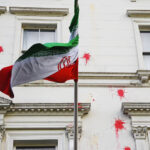
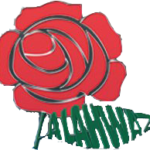
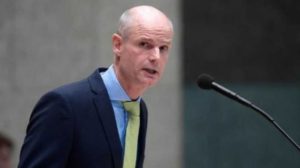
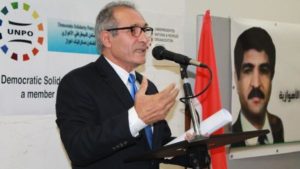
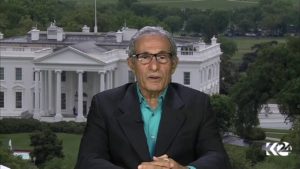


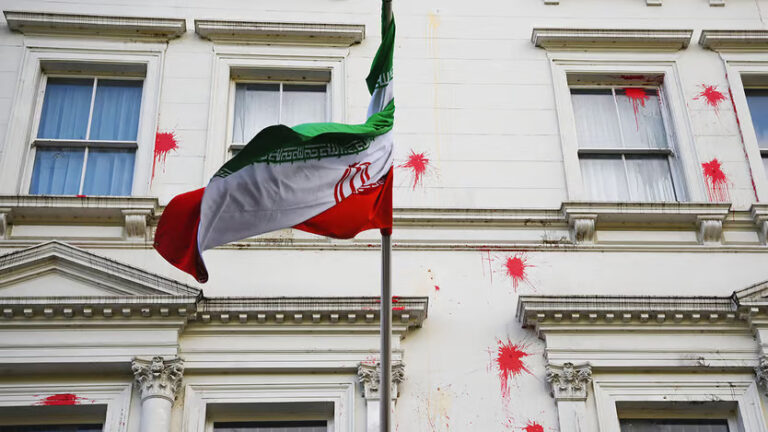
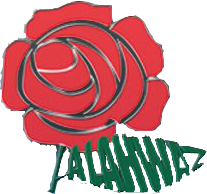
+ There are no comments
Add yours